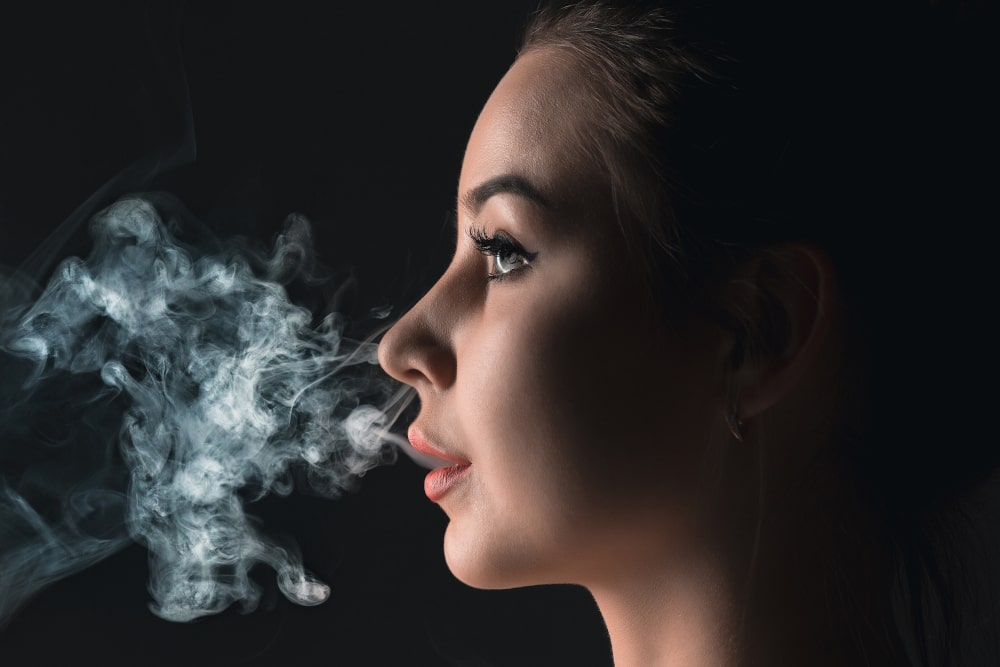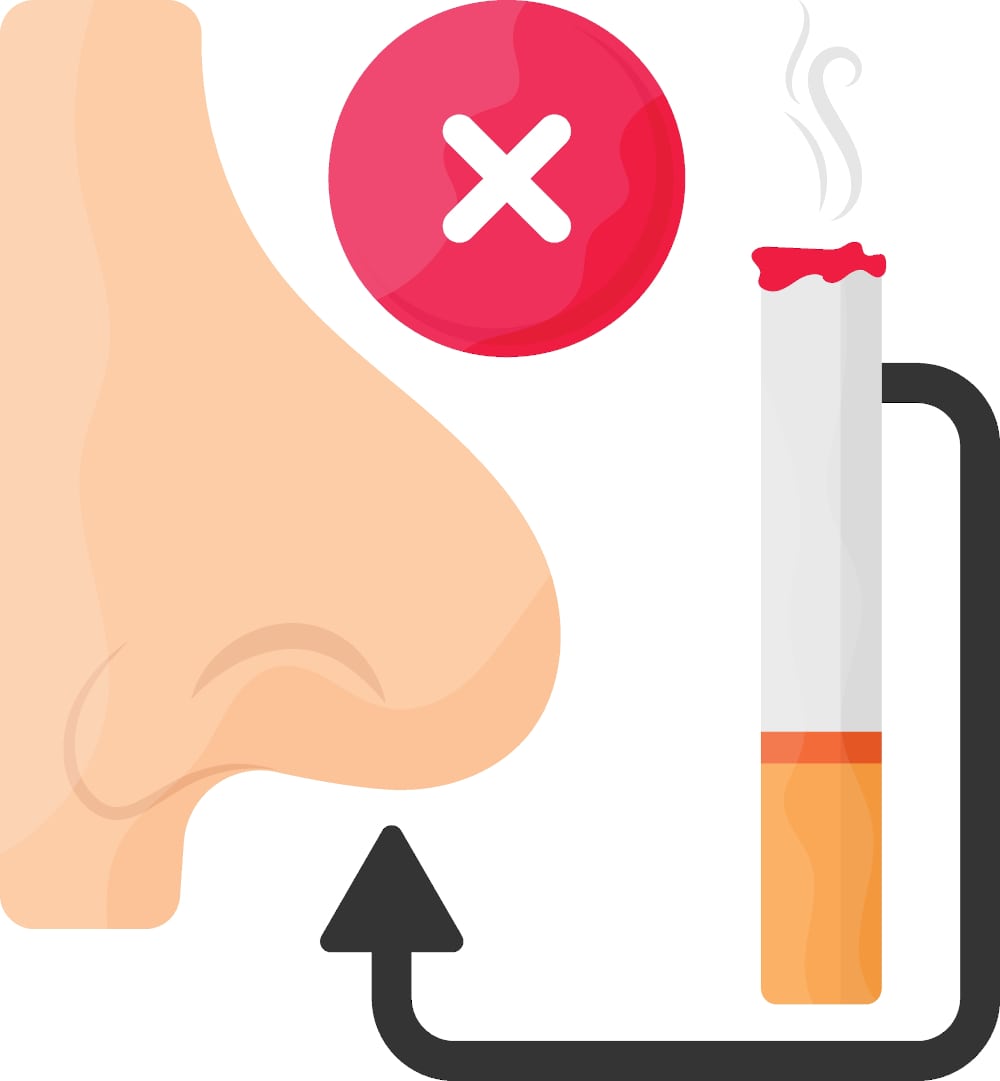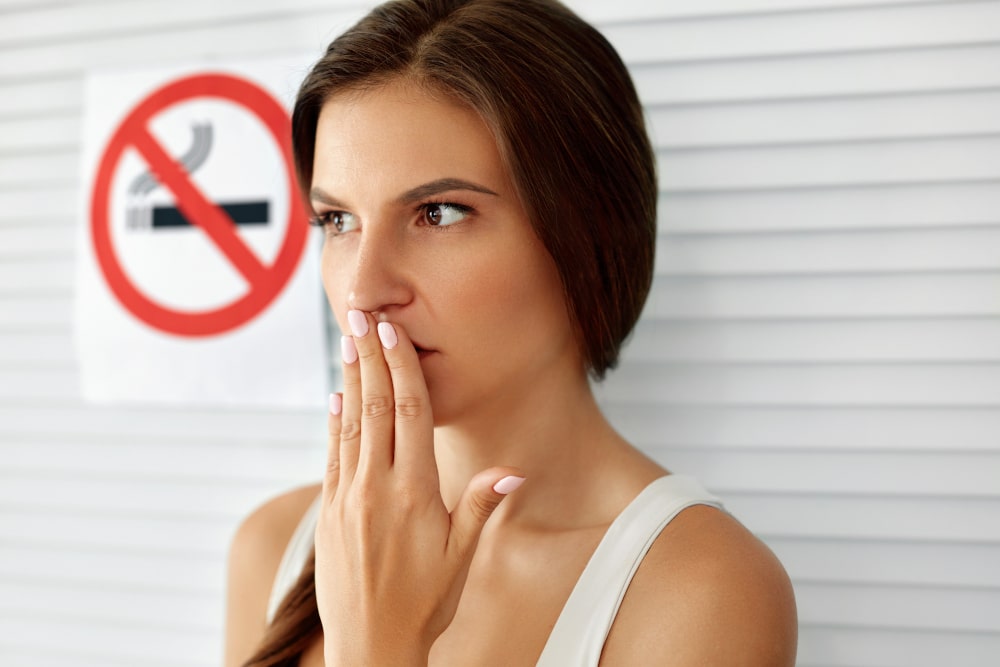
Key Takeaways
- Smoking after rhinoplasty significantly increases the risk of complications such as infection, delayed healing, and poor surgical results.
- Vaping, although sometimes perceived as a safer alternative, carries similar risks due to nicotine and potential tissue irritation.
- Most surgeons, including Dr. Richard Rival, recommend avoiding all forms of smoking and vaping for at least 4–6 weeks after surgery to ensure optimal healing.
- Nicotine substitutes like patches or gum may pose a lesser risk, but are not entirely safe during recovery.
Why is Smoking Risky After Rhinoplasty?
Rhinoplasty is not merely a cosmetic procedure — it requires precise healing of delicate nasal tissues. Smoking during this critical recovery period can severely disrupt the body’s natural healing mechanisms, leading to several potential risks.
Impact on Healing
Cigarette smoke contains thousands of harmful chemicals, including nicotine and carbon monoxide. Nicotine causes blood vessels to constrict, reducing the supply of oxygen-rich blood to the tissues. This oxygen is essential for wound healing, collagen production, and tissue regeneration.
When oxygen delivery is compromised:
- The healing process slows significantly.
- The risk of tissue necrosis (death of nasal skin tissue) increases.
- Scarring may become more pronounced and less predictable.
This is particularly dangerous in rhinoplasty because the nasal tissues are already stressed from surgical manipulation.
Complication, such as infection or Poor Results
Smoking also weakens the immune system, making the body more susceptible to infections post-surgery. Infections can not only prolong recovery but may also require additional procedures to correct.
Potential complications linked to post-rhinoplasty smoking include:
- Increased risk of wound infections
- Greater likelihood of skin or cartilage irregularities
- Suboptimal cosmetic results, such as asymmetry
- Higher chance of requiring revision surgery
According to Dr. Richard Rival, a renowned rhinoplasty specialist in Toronto, “Patients who smoke after surgery are far more likely to face complications. In my practice, I strongly advise all rhinoplasty patients to quit smoking entirely during the recovery period to maximize their chances of success.”
Research from Medical Sources
A study published in the National Library of Medicine highlights that smokers have a significantly higher rate of postoperative complications compared to non-smokers. The risk of skin loss and infection is nearly doubled in patients who continue smoking after rhinoplasty procedures.
How Does Vaping Affect Recovery Compared to Traditional Smoking?
With the rise of e-cigarettes and vaping, many patients wonder whether these alternatives are safer after rhinoplasty. Unfortunately, vaping poses its own set of challenges to healing.
Differences in Nicotine Delivery
Vaping devices deliver nicotine differently than cigarettes, but the core problem — nicotine itself — remains. Nicotine, regardless of delivery method, constricts blood vessels and impairs tissue repair.
| Factor | Traditional Smoking | Vaping |
|---|---|---|
| Nicotine presence | Yes | Yes |
| Oxygen delivery impaired | Yes | Yes |
| Heat exposure to tissues | Yes (hot smoke) | Yes (vapour heat) |
| Chemical exposure | Thousands of toxins | Fewer toxins but unknown additives |
| Impact on healing | Severe | Moderate to severe |
Tissue Irritation and Overall Risks
While vaping avoids some harmful byproducts of combustion, it still introduces heat, propylene glycol, and other chemical substances into the nasal passages. These can irritate healing tissues, causing:
- Prolonged swelling
- Delayed wound closure
- Possible tissue dehydration
Summary
Both smoking and vaping impede the essential healing process after rhinoplasty. Patients should avoid both to reduce the risk of surgical failure, prolonged swelling, and the need for corrective procedures.
How Long After Surgery Can You Smoke Safely?
The question of when it is safe to resume smoking after rhinoplasty arises frequently in post-operative consultations.
Timeline Recommendations
Most facial plastic surgeons, including Dr. Richard Rival, recommend a smoking cessation period that spans both before and after surgery:
- At least 2 weeks before surgery to improve oxygen circulation and reduce the risk of anesthesia-related complications.
- A minimum of 4–6 weeks post-surgery to allow for sufficient tissue healing, reduced inflammation, and scar maturation.
For complex or reconstructive rhinoplasty cases, this smoke-free period may need to extend to 3 months or more, depending on the individual’s healing response.
Risks if Done Too Early
Returning to smoking or vaping before the nasal tissues have healed can lead to:
- Reopening of incisions
- Increased nasal swelling and congestion
- Elevated infection risks
- Long-term aesthetic defects requiring revision surgery
Dr. Richard Rival emphasizes, “The longer a patient can avoid smoking or vaping after surgery, the better their outcome will be. Even one cigarette during the early healing phase can compromise months of surgical planning and precision.”

Surgeon Opinions and Expert Recommendations
Leading rhinoplasty surgeons globally uphold strict no-smoking policies post-surgery. The American Society of Plastic Surgeons andthe Canadian Society for Aesthetic Plastic Surgery both advocate complete smoking cessation for optimal healing results.
Some practices even test for nicotine to ensure compliance due to its critical impact on success rates. Ultimately, complete avoidance offers the best chance for a smooth, complication-free recovery.
Can You Vape After Surgery Without Affecting Rhinoplasty Results?
Many patients question if vaping without tobacco is safe post-surgery. But vaping — regardless of its nicotine source — remains a risk to nasal tissue recovery.
Risks of Vaping Even Without Tobacco
Even non-tobacco vaping liquids contain nicotine or chemical substances that may irritate healing tissues. Additionally, the heat generated by vape devices can dry and inflame the sensitive nasal lining.
Expert insights and surgery forums consistently caution against vaping during rhinoplasty recovery. Users often report:
- Prolonged nasal congestion
- Increased swelling
- Delayed scar maturation
Potential Impact on Tissue Healing
Studies suggest that exposure to vaporized substances may compromise capillary formation, which is essential for wound repair. Mucosal drying from inhaled vapour can lead to discomfort, crusting, and in some cases, post-surgical infections.
Anecdotal reports from surgery forums further confirm these risks, with patients noting worsened swelling and slower recovery times when vaping resumed too early.
What Are the Stages of Rhinoplasty Recovery, and How Does Smoking Impact Each Stage?
Recovery from rhinoplasty is a phased process, and smoking or vaping impacts each stage differently.
Week-by-Week Breakdown and Healing Milestones
| Recovery Stage | Typical Milestone | Smoking Impact |
|---|---|---|
| Week 1 | Significant swelling, bruising, and a nasal splint | Reduced blood flow delays healing |
| Week 2–3 | Stitches removed, swelling reduced | Increased risk of infection |
| Week 4–6 | Internal healing continues | Potential for tissue necrosis |
| Month 2–3 | Visible swelling subsides | Prolonged inflammation if smoking |
| Months 6–12 | Final shape refines, scar maturation | Weakened tissue structure, poor results |
Are Nicotine Patches or Gum Safer Alternatives During Recovery?
For patients struggling to quit, nicotine replacement therapies (NRT) like patches or gum are standard options. But are they truly safe post-rhinoplasty?
Effectiveness as Substitutes
Nicotine patches and gum provide controlled nicotine delivery without harmful smoke or vapour. They reduce cravings but still introduce nicotine into the bloodstream.
Advantages:
- No inhaled irritants
- Reduced risk of mucosal drying
- Easier transition for habitual smokers
Risks Still Present
However, nicotine itself remains problematic. It constricts blood vessels, reducing oxygen delivery to healing tissues — an essential factor for rhinoplasty recovery.
What Does Dr. Richard Rival Recommend Regarding Smoking and Vaping Post-Surgery?
Dr. Richard Rival, as a leading rhinoplasty surgeon in Toronto, holds firm recommendations about smoking and vaping during the post-surgical period.
Official Surgeon Advice
Dr. Rival’s patient instructions, as published on his clinic’s website and blogs, clearly state:
- Complete cessation of smoking and vaping for a minimum of 4–6 weeks post-surgery.
- Avoidance of any nicotine-containing products during the healing phase.
He emphasizes, “Regardless of form — cigarette, vape, or even nicotine gum — these substances impair the body’s ability to heal efficiently after rhinoplasty.”
Patient Instructions
Patients are advised to:
- Stop all nicotine use at least two weeks before surgery.
- Abstain for a minimum of six weeks post-operation.
- Seek medical assistance or join a support group for cessation if necessary.
These guidelines aim to ensure the best possible cosmetic and functional outcomes.

What Are the Long-Term Effects of Smoking on Rhinoplasty Results?
Smoking doesn’t just impact the immediate post-operative phase — it also has lasting effects on the outcome.
Impact on Final Appearance
Long-term smokers may experience:
- Thicker or uneven scar formation.
- Skin texture irregularities over the nasal bridge.
- Persistent swelling or redness.
These can detract from the surgical refinements achieved during rhinoplasty, diminishing the aesthetic improvements sought by patients.
Risk of Revision Surgery
- Asymmetry
- Nasal collapse or deviation
- Irregular tip definition
Patients who return to smoking prematurely may require corrective procedures to address these undesirable outcomes.
What Should You Avoid for the Best Rhinoplasty Recovery?
Summary Table
| Action to Avoid | Reason for Avoidance |
|---|---|
| Smoking cigarettes | Reduces oxygen supply, increases infection risk |
| Vaping (with or without nicotine) | Causes tissue irritation, delays healing |
| Nicotine patches or gum | Still constricts blood vessels, impairs recovery |
| Early return to smoking/vaping | Risks include tissue necrosis, scarring, and revision surgery |
Expert Recommendations
Dr. Richard Rival and other leading facial surgeons agree:
- Cease all nicotine forms before and after rhinoplasty.
- Follow post-operative care instructions strictly.
- Allow the nasal tissues adequate time — at least 6 weeks — before considering any form of smoking or vaping.
Sources
- https://rhinoplastytoronto.ca/
- https://rhinoplastytoronto.ca/blog/about-rhinoplasty/smoking-after-rhinoplasty-2/
- Journal of Plastic, Reconstructive & Aesthetic Surgery
- The Annals of Plastic Surgery
- The Journal of Wound Care
- Journal of Facial Plastic Surgery